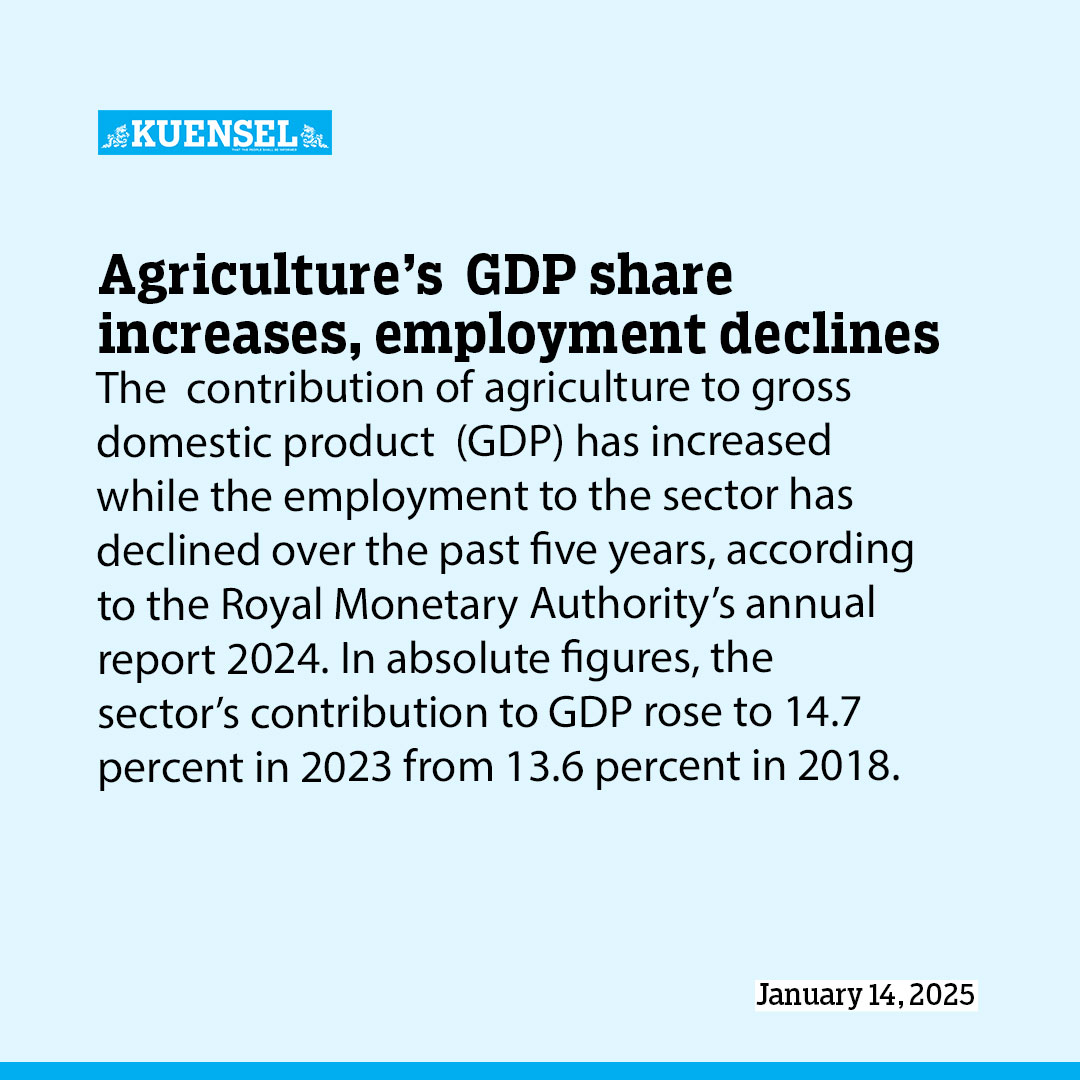Dorji Choden
The contribution of agriculture to gross domestic product (GDP) has increased while the employment to the sector has declined over the past five years, according to the Royal Monetary Authority’s annual report 2024.
In absolute figures, the sector’s contribution to GDP rose to 14.7 percent in 2023 from 13.6 percent in 2018.
Despite this growth, employment in the agriculture sector fell from 54 percent in 2018 to 43.5 percent in 2023. This indicates a shift in the country’s economy towards the industrial and service sectors.
The report also highlights regional and gender disparity within the sector.
Agriculture remains a primary source of employment in rural areas, where 64.9 percent of the workforce is engaged in farming.
Women are more likely to be employed in agriculture than men, with 52.3 percent of women employed in the sector compared to 37.3 percent of men.
Among rural women, 74.3 percent are involved in agriculture, while only 2.2 percent of urban women work in the field.
Conversely, urban employment was dominated by the service sector that employs 78.6 percent of urban workers.
Despite its importance, the agriculture sector faces challenges, including low productivity compared to other sectors.
While the country’s overall labour productivity was 98 percent in 2023, agricultural productivity stood at 95.6 percent.
In contrast, the productivity in non-agriculture sectors, such as industry and services, was higher, driven by capital-intensive activities such as hydropower.
The report stated that the transition of labour from agriculture to other sectors has narrowed the productivity gap from a peak of 7 percent in 2019 to 4.4 percent in 2023.
However, earnings in agriculture also remain significantly lower than in other sectors.
The per capita Gross Value Added (GVA) in agriculture in 2023 was Nu 235,102, which is about 27.4 percent below the national GDP per capita.
In contrast, the industrial sector (excluding electricity and services) reported GVA per capita 3.5 times higher than agriculture.
Agriculture is also labour-intensive, with workers contributing an average of 50 hours per week, exceeding Bhutan’s Labour and Employment Act 2007 and international standards of 48 hours.
The hourly earnings in the service sector dropped from Nu 361 in 2022 to Nu 333 in 2023, while earnings per hour in the non-electricity industry decreased from Nu 409 in 2022 to Nu 345 in 2023.
The report highlights the country’s agriculture sector faces various risks, including changing weather patterns, water scarcity, wildlife conflicts, fragmented landholdings, and a reliance on traditional farming methods, which hinder progress toward commercialisation.
Meanwhile, non-agricultural sectors also struggle with a shortage of skilled labour, limiting their ability to absorb workers from agriculture.


